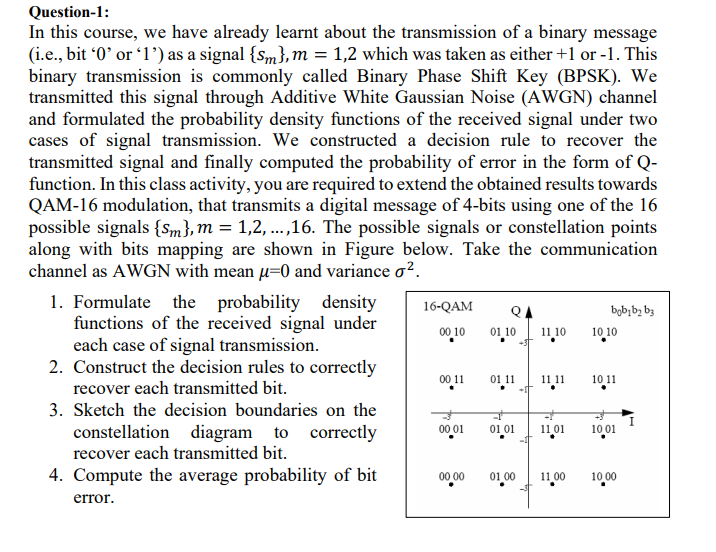Answered step by step
Verified Expert Solution
Question
1 Approved Answer
Subject: Applied probability Question-1: In this course, we have already learnt about the transmission of a binary message (i.e., bit ' 0 ' or '

Subject: Applied probability
Question-1: In this course, we have already learnt about the transmission of a binary message (i.e., bit ' 0 ' or ' 1 ') as a signal {sm},m=1,2 which was taken as either +1 or -1 . This binary transmission is commonly called Binary Phase Shift Key (BPSK). We transmitted this signal through Additive White Gaussian Noise (AWGN) channel and formulated the probability density functions of the received signal under two cases of signal transmission. We constructed a decision rule to recover the transmitted signal and finally computed the probability of error in the form of Qfunction. In this class activity, you are required to extend the obtained results towards QAM-16 modulation, that transmits a digital message of 4-bits using one of the 16 possible signals {sm},m=1,2,,16. The possible signals or constellation points along with bits mapping are shown in Figure below. Take the communication channel as AWGN with mean =0 and variance 2. 1. Formulate the probability density functions of the received signal under each case of signal transmission. 2. Construct the decision rules to correctly recover each transmitted bit. 3. Sketch the decision boundaries on the constellation diagram to correctly recover each transmitted bit. 4. Compute the average probability of bit errorStep by Step Solution
There are 3 Steps involved in it
Step: 1

Get Instant Access to Expert-Tailored Solutions
See step-by-step solutions with expert insights and AI powered tools for academic success
Step: 2

Step: 3

Ace Your Homework with AI
Get the answers you need in no time with our AI-driven, step-by-step assistance
Get Started


